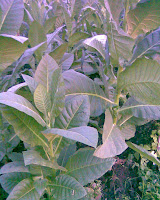 Learn how to compost. Even a novice can make good quality compost fertilizer. Can of cooking as art, science and will in this part of the charge. 7 factors will help you understand the art of composting.
Learn how to compost. Even a novice can make good quality compost fertilizer. Can of cooking as art, science and will in this part of the charge. 7 factors will help you understand the art of composting.1. Facilities
After all his time than ever before, is to decompose naturally. However, it should be composted, not all organic products in the home. For the preparation of compost and organic matter and microorganisms, air, water and a small amount of nitrogen needed.
This article certainly compost at home:
- Cut
- Decoration Cover
- Waste Plant
- Leaves
- The pot on the surface of the earth, at the age of
- Industry
- Coffee filter coffee powder
- Tea bags
- Herbs does not fall after trunk of the plant
These items are not safe, home to compost:
- Herbs, seeds, gold
- Dead animals
- Pet Dirt
- Bread and cereals
- Meat
- Fat
- Vegetable oil
- Fatty foods
- Factory pain
2. What can I do to make it work
Destruction of organic material, and there are small forms of plant and animal life. Called the life of microorganisms. The total garden soil or compost minutes many micro-organisms.
Nitrogen, air and water to provide an enabling environment for micro-organisms in the compost. The flow of air and water to keep the microorganisms in the areas of health and employment. Nitrogen eat micro-organisms. You may need to add a small amount of nitrogen in the pile.
A Introduction of nitrogen overload kills microbes and a lot of water very little air in the heap. You also can not air so much.
3. Micro-organisms useful
Bacteria are one of the best producers of fertilizer in the compost. They were the first to break the plant tissue. Then, fungi and parasites, to facilitate this process. Such as arthropods, centipedes, centipedes, beetles, worms, and that brings a final touch at the end of the compost.
4. Smaller the better
These materials decompose more quickly if the micro-organisms is the surface to eat. Materials will reduce your garden with the joy of chopping, or lawn mower to help them decompose faster.
5. Heap size
Activities of millions of micro-organisms produce heat in the compost, and requires a minimum of 3 feet in size 3 feet by 3 feet of the pile, the composting temperature quickly. A larger part of that, to prevent the flow of air in many micro-organisms needed.
6. Humidity and ventilation
If a damp sponge in a number of impurities and air express can imagine, it would be an ideal environment for microbes to function in the stack at its best. Please note that while your compost pile, and the amount of rainfall or drought, you may be. Drought and water can replace the battery in a large number of rainy days. Both can disrupt the balance of the extremes of the stack. With a fork, which will be useful at this time.
7. Temperature and time
To maintain a lot of love and the 160f to 110F between beneficial bacteria, I will. Not too cold or too hot.
The temperature will rise within days, if you maintain a good ratio of carbon and nitrogen to maintain the building in a large volume of material, humidity and adequate ventilation to obtain.
The importance of compost :
+ Compost is food, but not complete fertilizer.
+ compost provides nutrients in the soil until the plants, and use.
+ is twice as air, soil, mud
+ maintaining the sandy soil.
The use of compost
+ Change the mixture of soil from 2 to 5 cm of compost in the garden each year before planting.
+ potting mix, add one part compost two parts soil.
+ Make your own soil mix with equal parts of compost and sand or perlite.
+ PRODcast mulch 2-4 inches of compost around annual flowers and vegetables, as well as up to 5 inches around trees and shrubs.
+ spray top dressing of compost mixed with sand and grass so finely sifted.
The last thing I say when you drag the composting technology to consider seriously taking had mastered their own compost tea, is very wide. This will give you the results of the elixir that hard to believe.
Read More......





